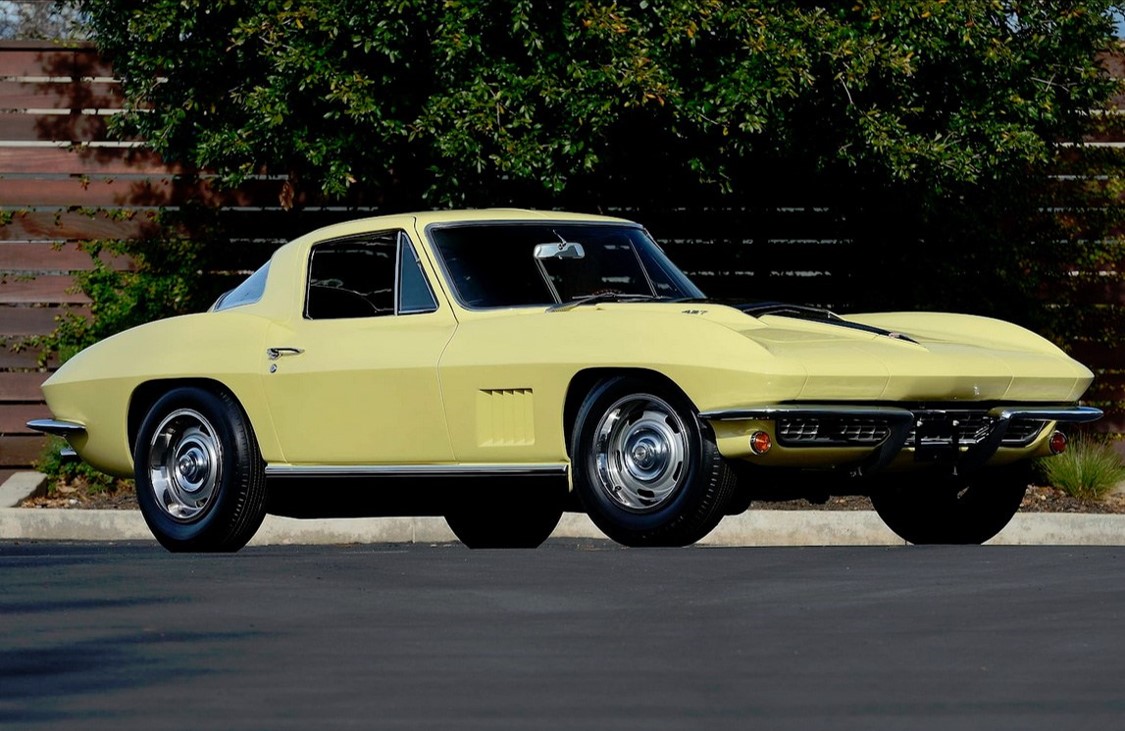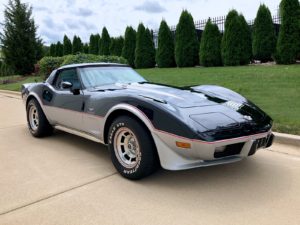The “gross power” of the big-block L88’s modesty
Intended for production class racing, Chevrolet’s peak power in the sixties was inconspicuously offered to the public in extremely limited quantities. Indeed, the top engine offering did not actually appear in sales brochures from 1967 to 1969.[0] And fewer than a thousand of these untamed L88 and ZL1 racing big blocks were produced. Due in part to their public obscurity, these engines were less popular in new Corvettes and COPO Camaros than they were sold by themselves as crate engines in the aftermarket.[1] However, whether delivered in a crate, Corvette, or a COPO,[2] many of these engines motivated competitive dragsters and track cars for years after their production.[3]
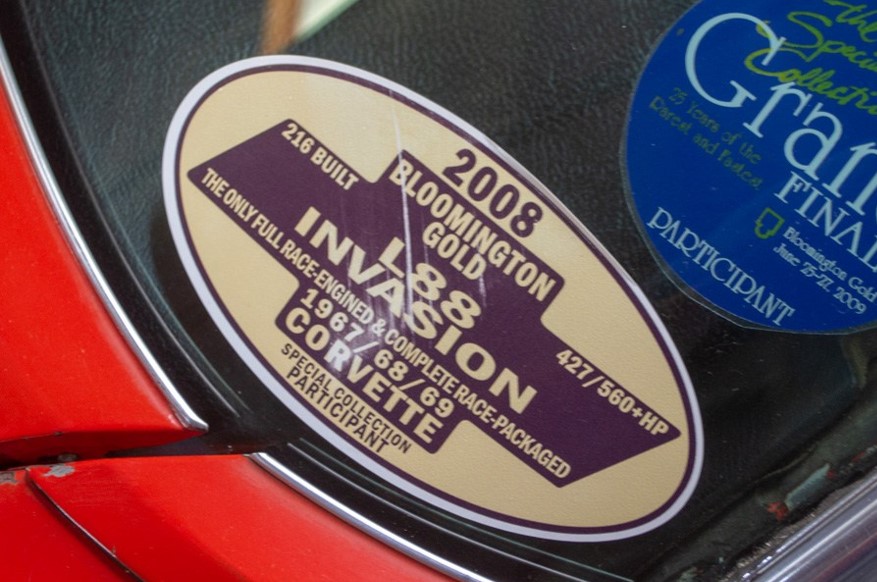
This Bloomington Gold 2008 “L88 Invasion” participant sticker rests upon a 1969 L88 Stingray Roadster and was 1 of 216 L88 powered Corvettes built from 1967-1969. It notes all these details as well as the 560+ estimated gross horsepower the venerable 427 had. Additionally, it declares the L88 option as “The only full race-engined & complete race-packaged 1967/68/69 Corvette.” Pic courtesy of Corvette Mike in Anaheim, CA
Leading up to the venerable aluminum headed 427s, the first Corvette big block V8 was offered in March of 1965.[4] It was the cast iron Mk. IV monster, initially displacing 396 cubic inches and optioned as the L78 power team. During the 1965 model year the big block’s brute simplicity unseated the sophisticated mechanical fuel injected small-block 327 that preceded it.
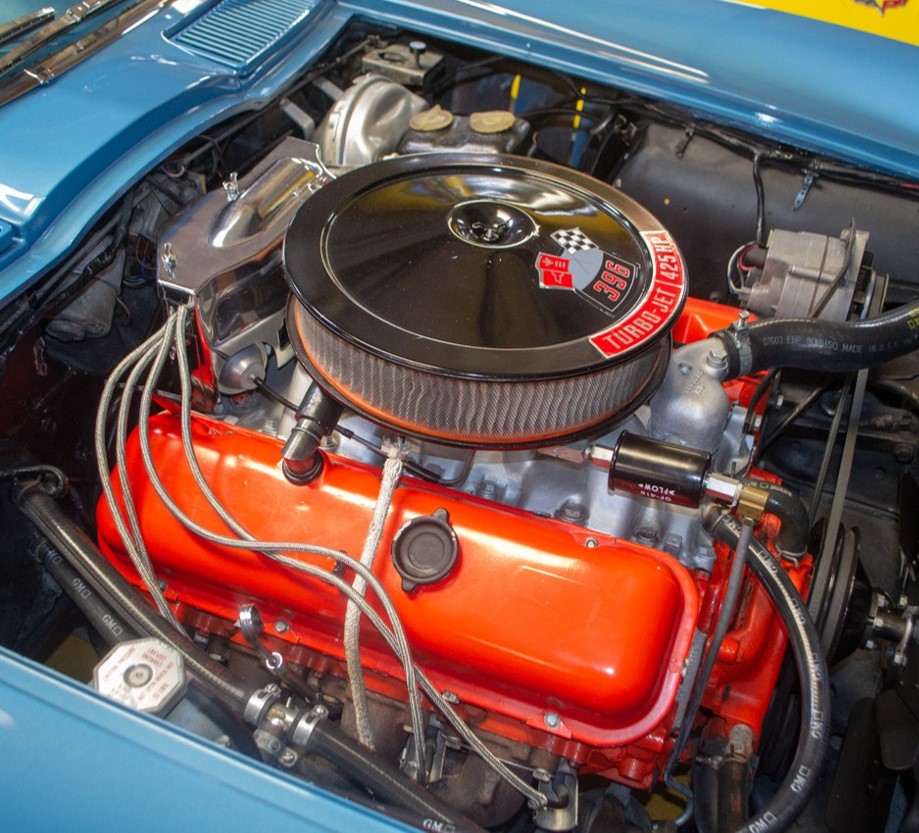

Pic 1: 1965 L78 396 cubic inch big-block V8 rated at 425 gross horsepower
Pictures courtesy of Corvette Mike in Anaheim ,CA
Pic 2: A 1967 Chevrolet L88. The 427 cube V8 was conservatively rated at 430 gross horsepower. Pic courtesy of Corvette Mike’s not for sale collection. https://corvettemike.com/used-corvettes-for-sale/1967-sunfire-yellow-l88-corvette-coupe/
And soon after that, Zora Duntov’s team of Denny Davis and Fred Frincke set off for the horsepower summit with the L88 competition engine project.[5] The racing engine that had been winningly ‘tested‘ by Roger Penske’s Sebring team the prior year, was discreetly delivered to customers for the first time in the 1967 model-year. The iron block’s increased bore lifted displacement[6] from 396 to 427 cubic inches. At that time NASCAR’s maximum authorized displacement was 429 cubes or 7.0 liters.[7]
The stout solid lifter racing engine could rev like its contemporary overhead cam engines – to 6500 RPMs – and was endowed with weight saving aluminum components.[8] When installed in a vehicle at the factory, the iconic engine noted its requirement for nearly 100 octane fuel with a console sticker. [9]

The L88 console sticker that read “. . . Minimum of 103 Research Octane and 95 Motor Octane or Engine Damage May Result.” So was the cost of having a racing engine with 12.5:1 compression. This sticker – as well as the picture – is from a 1969 L88 Stingray Roadster sold by Corvette Mike in Anaheim, CA
In order to purchase a production L88, additional performance options – heavier transmission, suspensions, brakes, etc. – became mandatory . And to further reduce its public appeal – and weight – amenities like air-conditioning and radios could not be specified on a vehicle with a racing engine.

This table was included in Chevrolet’s 1969 Corvette sales brochure and summarizes the extra-cost engines, as well as some of the transmissions and differentials combinations, that could be added. The L88 finally appeared in such a table in 1969. But it was still conservatively rated, with 5 fewer horsepower than the also conservatively rated L71. Although the L88 was buried in this table the – even more exclusive – aluminum ZL1 was not. Table presented with permission from GM Heritage Center.
From 1967 through 1969, GM rated the L88 at 430 Gross HP (about 330 Net HP), five gross horsepower fewer than the published rating on the more civilian L71 427 V8.[10] Modern estimates of the L88’s original gross horsepower seem to settle around 560 gross horsepower, or approximately 430 net horsepower.[11] So perhaps only in the L88’s case, the 430 horsepower listed in the 1969 sales brochure might actually be comparable to the Net HP rating that’s ubiquitous today.
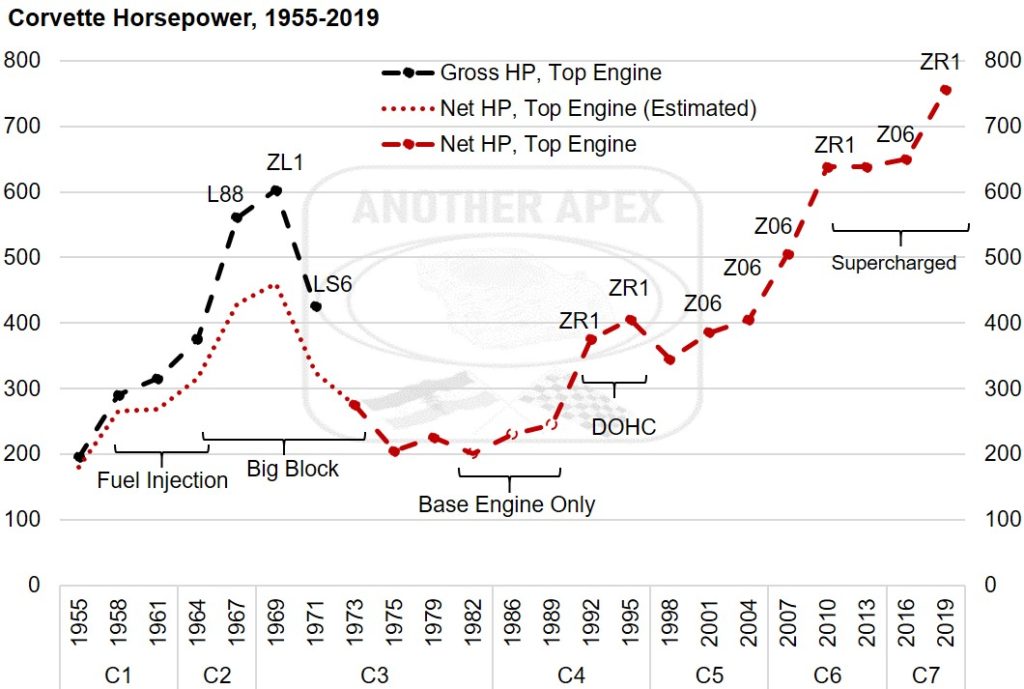
Prior to 1972 model year, reported horsepower was “gross” (i.e. engine dyno-ed without intake or exhaust filtration/obstruction); GM’s published hp ratings of 430 hp disregarded for 1967 L88 and 1969
From Corvette Museum Archives, GM, Noland Adams, AnotherApex estimates, www.hotrod.com/articles/ccrp-0910-chevy-l88-427-engine/ -and- www.motortrend.com/news/feature-flashback-og-supervette-when-c3-chevrolet-corvette-zl-1/ both accessed 6/17/2019
But lest we forget the L88 was meant for racing and Owens Corning – the sponsor of one of the winningest Corvette race teams – noted that their racing C3 L88s sometimes pushed 685 gross horsepower on endurance tracks. Which likely translated to 525 – 625 Net HP.[12] In 1969 only, racers – or otherwise extremely wealthy and connected individuals – could have their L88s served “animal style” with a grilled bauxite block. Indeed, we’ll cover this option – otherwise known as RPO ZL1 – next time.
Written by Jez Stephens
Please request notification of new posts from anotherapex.com.
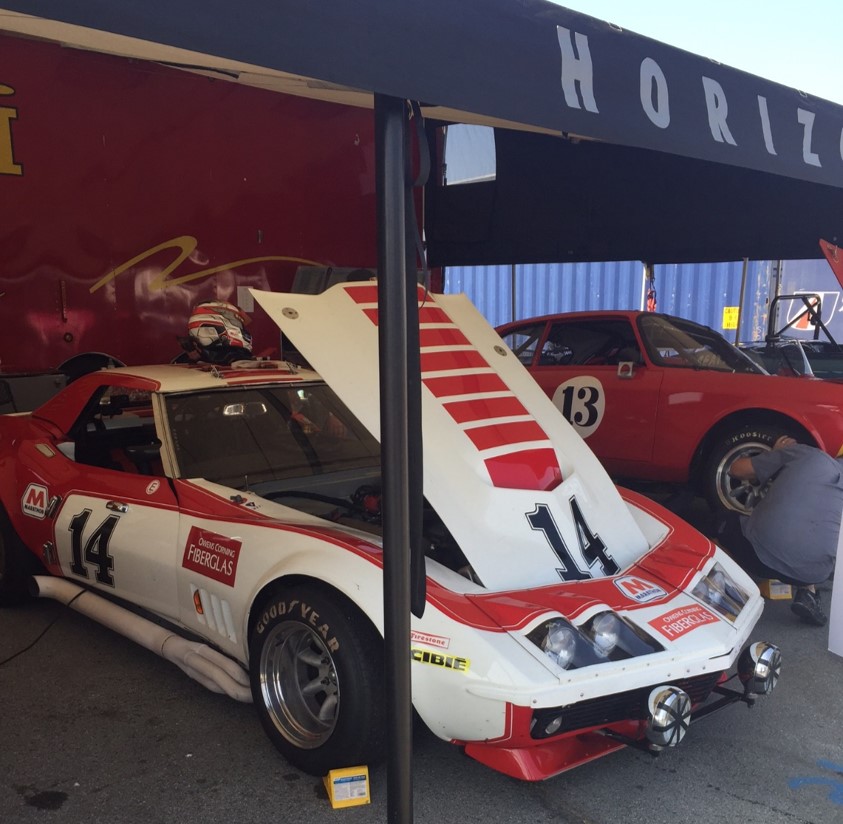
A 1968 Chevrolet Corvette L88 Owens Corning Racer [a vintage tribute car #14] takes service in its race pit.
[0] GM Heritage Center www.gmheritagecenter.com
[1] According to Keith Conet’s book “Corvette Special Editions,” Fred Frinke claims that 549 iron block L88 427s and 154 alloy block ZL1 427s were produced in Tonawanda, NY. Other accounts suggest a slightly higher quantity of ZL1s, but still under 200. CarTech, 2018, page 143. Car production figures imply that the majority of these engines were produced as crate engines.
[2] COPO stands for Central Office Production Order and this method allowed GM dealers to order vehicles with “ . . . an unlisted combination of off-the-shelf parts.” Mike Muller’s The Complete Book of Chevrolet Muscle Cars 1955-1974, Quarto Publishing Group, 2017 page 66
[3] http://www.thedrive.com/vintage/6591/firing-up-the-legendary-greenwood-corvette accessed 1-26-2019
[4] https://www.hemmings.com/blog/2018/12/24/display-engine-from-1964-65-ny-worlds-fair-illustrates-a-short-chapter-in-corvette-history/ accessed 7-17-2019
[5] Jerry Burton’s book “Zora Arkus-Duntov” Bentley Publishers, 2002, page 332
[6] https://www.hemmings.com/blog/2015/02/13/rats-chevrolets-mark-iv-big-block-v-8-turns-50/ accessed 1-26-2019
[7] https://www.railwayage.com/play-it-safe/anatomy-of-a-nascar-sprint-cup-series-racecar/ accessed 1-26-2019
[8] Aluminum cylinder heads, intake manifold, cam roller rockers, and TRW forged pistons noted in https://www.hotrod.com/articles/ccrp-0910-chevy-l88-427-engine/ accessed 1-26-2019
[9] Average of 103 Research and 95 motor octane https://www.hagerty.com/articles-videos/articles/2018/05/08/the-67-l88-is-the-ultimate-classic-corvette-and-nows-your-chance-to-own-one accessed 1-26-2019
[10] https://www.gmheritagecenter.com/docs/gm-heritage-archive/vehicle-information-kits/Corvette/1967-Chevrolet-Corvette.pdf accessed 1-26-2019
[11] 560 gross hp can be arrived at from two different modern estimates. 1) Hot Rod Network’s Jeff Smith tested (8-1-2009 article) an original L88 – with low compression – at 524 gross hp at 6100 RPM. Adjusting up by 7% for the low compression, brings the ghp estimate to 560 https://www.hotrod.com/articles/ccrp-0910-chevy-l88-427-engine/ accessed 1/30/2019. 2) Nicolas Wallace with Car & Driver reported that “real output” for a L88 was likely in the 540 – 580 ghp range in a 8-7-2015 article https://www.caranddriver.com/news/a15353842/the-500-hp-corvette-that-chevrolet-didnt-talk-about/ accessed 1/30/2019
[12] https://www.youtube.com/watch?v=OMFJYEoSoDQ accessed 7/17/2019


